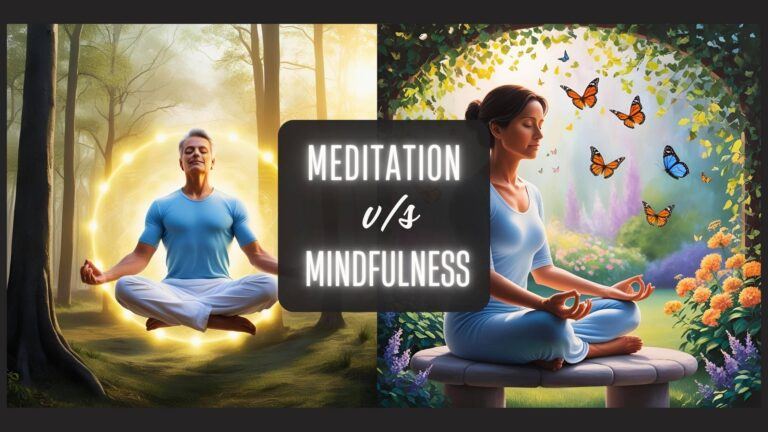What’s the real difference between simply being mindful and actually meditating? The two often get mixed up, but there are important differences between meditation and mindfulness that can change how you approach your personal growth and stress relief.
Whether you’re trying to feel calmer during a busy day or looking to build a daily practice, knowing how these two practices work and how they differ can make a big difference. In this post, you’ll learn 9 key differences between meditation and mindfulness, so you can decide which one fits your lifestyle and goals best.
1. Definition & Core Concept
Let’s start with the basics. To understand how meditation and mindfulness are different, we need to know what each one really means.
Mindfulness is the act of paying full attention to what’s happening in the present moment without judgment. It means being aware of your thoughts, feelings, body sensations, and surroundings as they are, not as you wish them to be. You can be mindful while walking, eating, listening, or even doing chores. It doesn’t require sitting still or following a set routine.
Meditation, on the other hand, is a formal practice. It usually involves setting aside time to sit quietly and focus your attention in a specific way. For example, you might focus on your breath, repeat a mantra, or visualize a peaceful image. The goal of meditation is to train your mind whether that’s to become more focused, relaxed, loving, or aware.
So in short:
- Mindfulness is a way of being present in daily life.
- Meditation is a technique or practice used to develop certain mental qualities.
They can work together, but they aren’t the same thing.
2. Purpose & Intention
While mindfulness and meditation are closely connected, they are often practiced with different goals in mind.
Mindfulness is mainly about being aware of what’s happening right now. The purpose is to stay present and fully engaged in each moment, whether you’re brushing your teeth, talking to someone, or feeling a strong emotion. People often use mindfulness to reduce stress, become less reactive, and bring more calm and focus into daily life.
Meditation, on the other hand, usually has a deeper or more specific purpose. It’s a focused practice meant to train your mind over time. Some people meditate to develop concentration or inner peace, while others use it for emotional healing or spiritual growth. Meditation helps you go beyond everyday awareness and build long-lasting mental habits like patience, compassion, or clarity.
In simple terms:
- Mindfulness helps you live each moment with more awareness.
- Meditation helps you grow mentally, emotionally, or spiritually through regular practice.
Both are useful but they serve different purposes depending on what you’re looking for.
3. Structure & Formality
Another key difference is how each practice fits into your day. One is more flexible, while the other usually follows a set structure.
Mindfulness can be done at any time, in any place. It doesn’t need a quiet room or a timer. You can be mindful while drinking tea, walking to work, or even while talking to someone. There’s no special routine just the intention to be fully present in whatever you’re doing.
Meditation, however, is more formal. It usually involves setting aside time to sit or lie down in a quiet space. You might follow a specific method like focusing on your breath, repeating a mantra, or using a guided audio. Meditation often has a clear beginning and end, with a goal to stay focused during the entire session.
To sum it up:
- Mindfulness is informal and can be practiced throughout the day.
- Meditation is more structured and often done as a separate, dedicated activity.
Both are valuable, and many people find it helpful to use mindfulness during the day and set time aside for meditation when they can.
Loving the insights so far? If you’re ready to deepen your mindfulness practice, check out these amazing courses that can help you get there.



4. Techniques Involved
Mindfulness and meditation may seem similar, but they often use different techniques to train your mind and attention.
Mindfulness involves simply paying attention to what you’re doing in the moment. This could be focusing on how your food tastes while eating, noticing your breath while walking, or being fully present while talking to someone. There’s no need to change anything just observe your thoughts, feelings, or sensations as they come and go.
Meditation includes a wide range of techniques, depending on the style or tradition. Common methods include:
- Focused attention, such as watching the breath or repeating a mantra.
- Loving-kindness meditation, where you send kind thoughts to yourself and others.
- Body scan, where you move your awareness slowly through each part of the body.
- Visualization, where you picture peaceful scenes or symbols in your mind.
While mindfulness can be one part of a meditation practice, not all meditation techniques are focused on mindfulness.
In short:
- Mindfulness techniques focus on open awareness in daily life.
- Meditation uses specific methods to guide and train the mind during a set time.
5. Duration & Frequency
How long and how often you practice also shows a clear difference between mindfulness and meditation.
Mindfulness doesn’t have a fixed time limit. Since it’s a way of paying attention, you can be mindful for a few seconds or several hours. You might bring mindfulness to a short activity like washing your hands, or carry it with you through your entire day. There’s no set schedule it’s more about how often you remember to be present.
Meditation, on the other hand, is usually done for a set period of time. People often meditate for 10 to 30 minutes, once or twice a day. Some may start with just a few minutes and build up slowly. The idea is to create a regular routine so that the mind gets used to being still and focused.
To put it simply:
- Mindfulness can happen at any time, for any length of time.
- Meditation is often done for a set time each day, like a daily habit.
Both can be effective, and combining them can bring even more benefits.
6. Accessibility in Daily Life
Another important difference is how easily each practice fits into your everyday routine.
Mindfulness is very flexible and easy to include in daily life. You don’t need any special setting, tools, or time. You can practice it while walking, eating, working, or even doing the dishes. This makes mindfulness a useful tool for busy people who want to feel more present without needing to stop what they’re doing.
Meditation, however, usually needs a quiet space and dedicated time. You might need to pause your activities, sit down, and remove distractions for a few minutes. While this can be very rewarding, it may be harder to fit into a packed schedule especially at first.
So in summary:
- Mindfulness can be done anytime, anywhere even during daily tasks.
- Meditation often requires setting aside time and space to practice.
If you’re looking for something easy to do throughout the day, mindfulness is a great place to start.
Hope you’re finding this post useful! Want to take your meditation practice further? We’ve got some fantastic programs that could be just what you need.
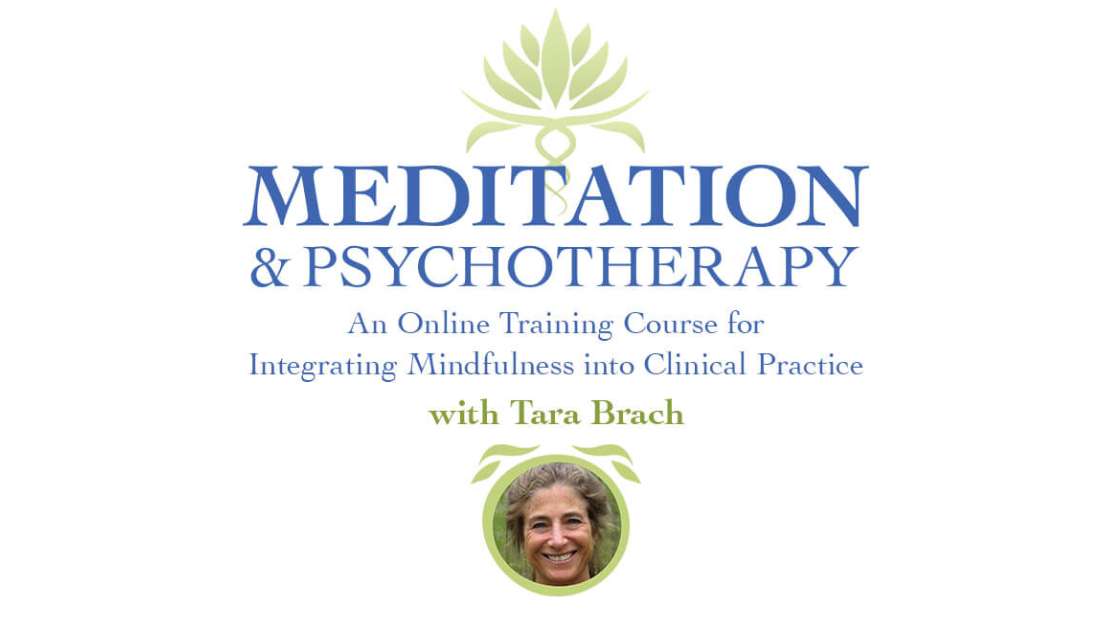
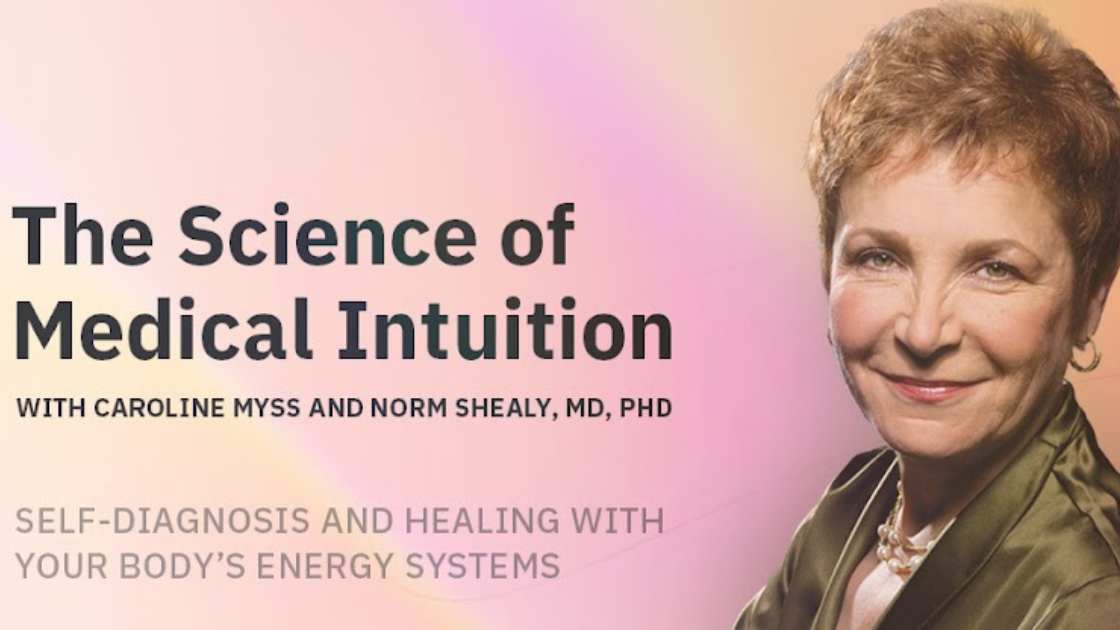
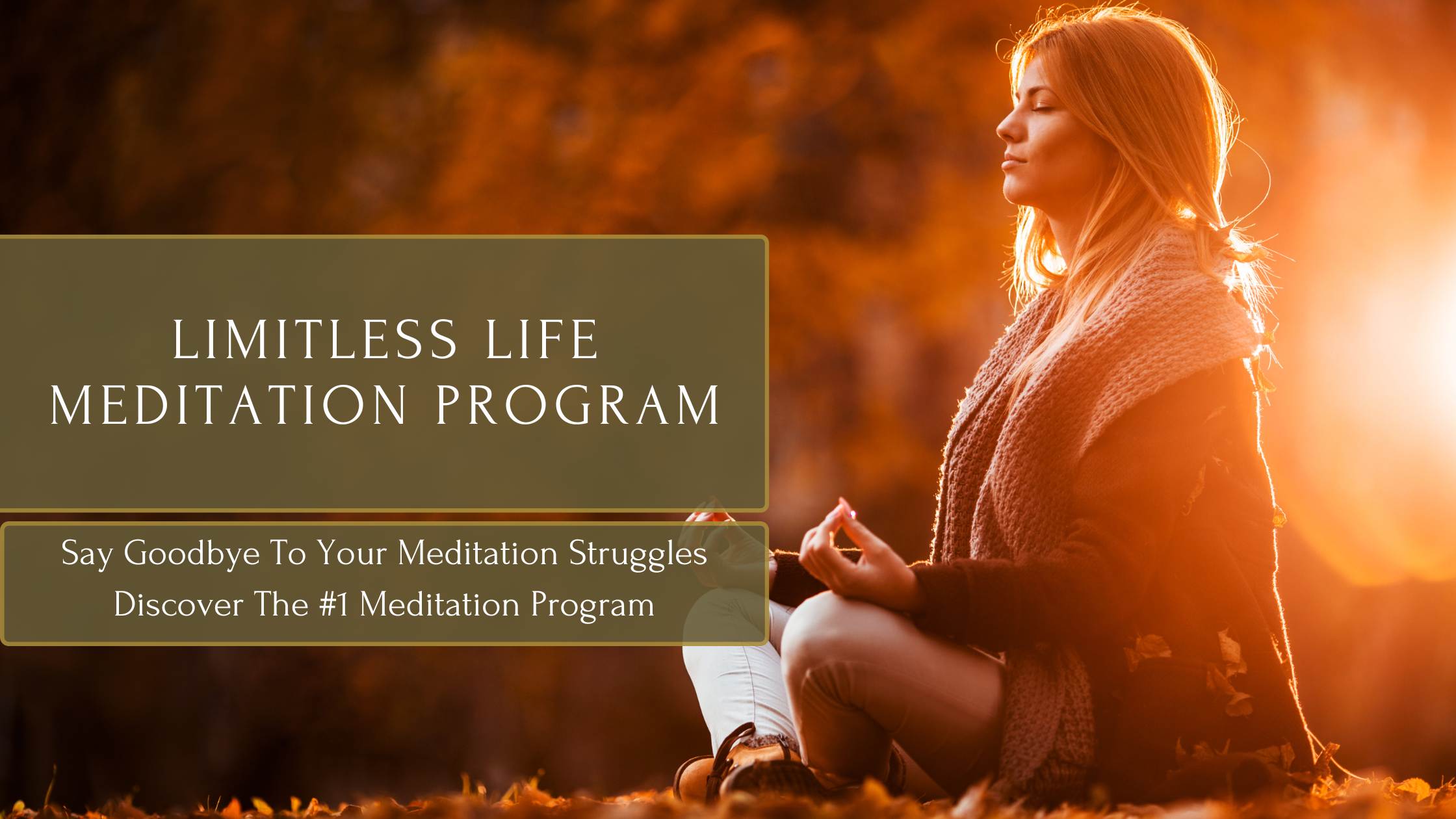
7. Focus & Attention
Both mindfulness and meditation involve paying attention, but the way they do it is slightly different.
Mindfulness is about keeping a gentle awareness on whatever is happening in the moment. Your attention may move from one thing to another, your breath, your thoughts, a sound, or even a feeling in your body. The goal isn’t to focus on one single thing, but to stay present and notice what’s happening without getting lost in it.
Meditation, on the other hand, often involves focused attention. You usually pick one thing, like your breath, a mantra, or a mental image, and try to keep your mind on that. If your attention wanders, you gently bring it back. Some meditation styles, like open awareness, allow more flexibility, but in most cases, meditation helps you build stronger focus and concentration.
To sum up:
- Mindfulness allows attention to move naturally, as long as you stay present.
- Meditation usually trains the mind to focus on one thing at a time.
Both are helpful, but meditation tends to offer deeper focus training, while mindfulness supports steady awareness in everyday life.
8. End Goal or Outcome
The ultimate goal of mindfulness and meditation can be different depending on your practice, but both are aimed at improving your mental and emotional well-being.
Mindfulness is generally about enhancing your experience of the present moment. It helps you become more aware of your thoughts, feelings, and reactions, which can lead to reduced stress, improved focus, and better emotional balance. Mindfulness is often used to cope with day-to-day challenges, such as anxiety or frustration, by helping you stay calm and centered.
Meditation, on the other hand, often has deeper, long-term goals. It can lead to profound changes in how you think and feel over time. Some people meditate for inner peace, greater clarity, or emotional healing. Meditation can also be a spiritual practice, aiming for deeper understanding or enlightenment. The outcomes of meditation are often more transformational, with lasting effects on your mindset and outlook on life.
In summary:
- Mindfulness improves your ability to stay present and calm in everyday life.
- Meditation works on deeper, long-term mental growth and spiritual development.
While mindfulness brings immediate benefits, meditation often leads to more profound changes over time.
9. Role in Practice
While mindfulness and meditation are distinct practices, they often complement each other. One can support the other, and both can be part of a well-rounded approach to mental and emotional well-being.
Mindfulness is a quality that can be practiced in everyday life and can actually be part of a meditation session. When you meditate, you often bring mindfulness into the practice whether it’s by staying aware of your breath, noticing your thoughts without judgment, or observing your body. In this way, mindfulness is like a tool or skill that enhances meditation.
Meditation, on the other hand, is usually the foundation or structure from which mindfulness can grow. Regular meditation helps you build the mental clarity, focus, and patience that make it easier to be mindful throughout the day. Meditation provides the space for deeper self-awareness, which can carry over into everyday activities.
To put it simply:
- Mindfulness can be practiced anytime and is often used within meditation.
- Meditation creates the mental space and habits that help you be more mindful in daily life.
Incorporating both into your life allows you to reap the benefits of each, enhancing your overall well-being.
Final Thoughts
Understanding the differences between meditation and mindfulness is key to knowing how to use them effectively in your life. While mindfulness helps you stay present in everyday moments, meditation provides a structured practice for deeper mental growth and focus. Both practices offer unique benefits, and when combined, they can work together to enhance your emotional well-being and overall quality of life.
Whether you’re looking to be more mindful during your daily routine or seeking a dedicated practice to transform your mind, you can start with either and find the path that works best for you.
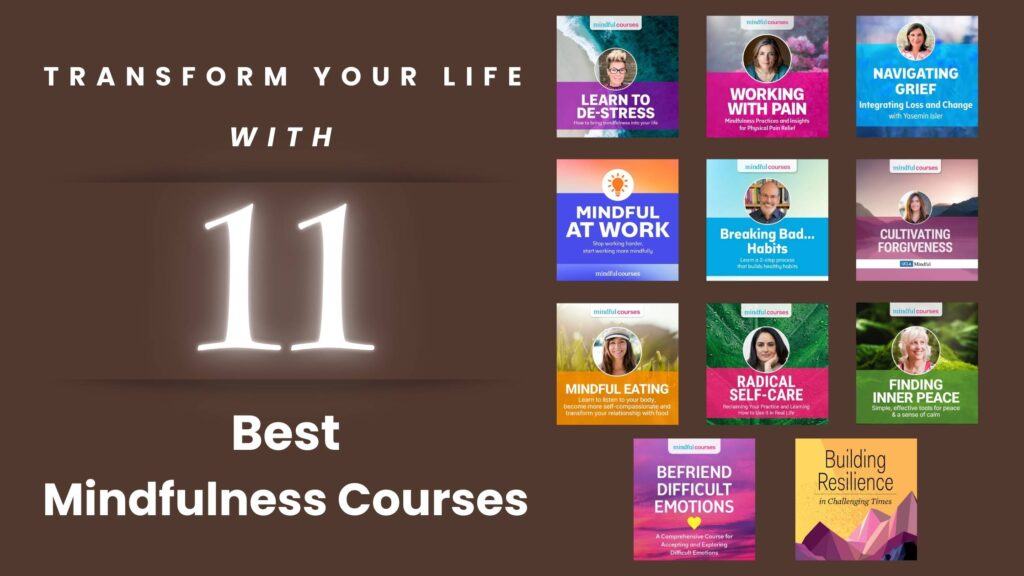
Deepen Your Mindfulness Practice
Explore these top mindfulness courses and find the one that best suits your needs.
Whether you want to reduce stress, build resilience, or cultivate self-compassion, there’s a course for you.
Start your journey today!

